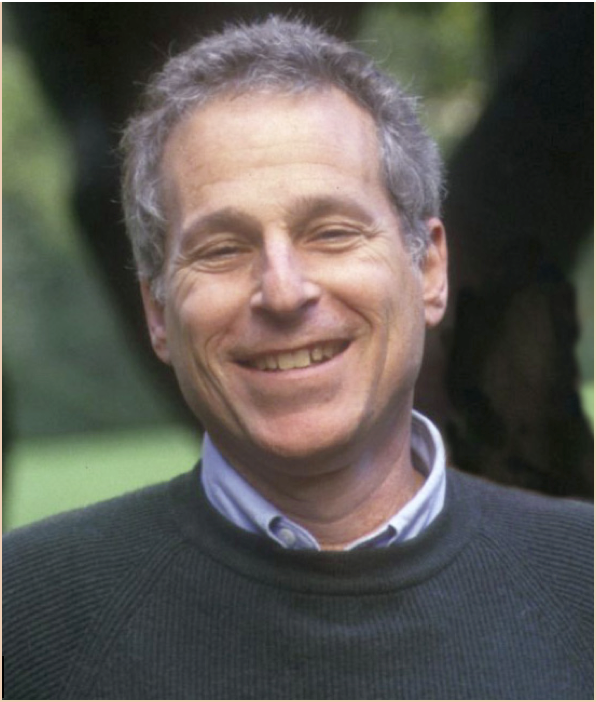News
David Chandler
1944-2017
 The CECAM community mourns David Chandler, towering physical chemist and long-time friend of CECAM, who passed away after long illness on 18 April 2017 at age 72 in his home in Berkeley, California. During his long and distinguished career, David has taken part in many CECAM activities, both as participant and organiser, and with his scientific vision and creativity he has provided invaluable guidance and inspiration to the community.
The CECAM community mourns David Chandler, towering physical chemist and long-time friend of CECAM, who passed away after long illness on 18 April 2017 at age 72 in his home in Berkeley, California. During his long and distinguished career, David has taken part in many CECAM activities, both as participant and organiser, and with his scientific vision and creativity he has provided invaluable guidance and inspiration to the community.
David Chandler was born in New York in 1944. After receiving a S.B. degree in Chemistry from MIT and a Ph.D. in Chemical Physics from Harvard, he began his academic career in 1970 at the University of Illinois, Urbana-Champaign, where he rose through the ranks to become a full professor in 1977. In 1984 he moved to the University of Pennsylvania and in 1986 he joined the faculty of UC Berkeley to which he belonged until his untimely dead. David’s field of study was statistical mechanics, which he applied to uncover the microscopic structure and dynamics of condensed matter systems. From the beginning, David has recognized the great power of computer simulations and he has used them masterfully in concert with analytical theories to gain insights into the fundamental forces that govern the complex dynamics of liquids, glasses and biological assemblies. In fact, David strongly believed that only theoretical models, tested with numerical simulations, can yield true understanding about how nature works. As he pointed out, these models should be very simple because computer simulation eliminates the need for complicated theories.
In the course of his career, David contributed several crucial advances and perspectives that changed the way we think about complex condensed matter phenomena. Early on, working with Hans Andersen and John Weeks, David developed a quantitative description of the structure and thermodynamics of simple liquids based on molecular packing and a perturbative treatment of attractive interactions. This work, known as the WCA theory, is now regarded as a basic equilibrium theory of the liquid state. Later, David and co-workers generalized this approach in the reference interaction site model to provide the first successful predictions of the structures of polyatomic liquids.
Another influential contribution of David Chandler was the introduction of statistical mechanical techniques for analyzing chemical equilibrium and chemical dynamics in condensed matter. Together with Bruce Berne, David carried out early computer simulations of these processes and devised methods to compute time correlation functions for populations of chemical species, from which rate constants of chemical reactions can be extracted. Thereafter, with Peter Wolynes, he developed quantum mechanical (path integral) versions of these methods, which he applied fruitfully to understanding electrons in liquids, electron transfer in proteins, and nuclear vibrations and tunneling in liquid phase chemical dynamics.
In the late 1970’s David Chandler turned his scientific attention to the hydrophobic effect, which controls how water arranges around oily species and plays a central role in self-assembly and life processes. David and his student Lawrence Pratt developed a molecular theory for hydrophobic forces based on the Gaussian fluctuations associated with the solvation of small hydrophobic species. In the late 1990’s, tgeother with Ka Lum and John Weeks, David then generalized this theory to larger length scales by including the effect of the liquid-vapor interface on hydrophobic assembly.
In the late 1990’s, David, working with Peter Bolhuis, Christoph Dellago and Phillip Geissler, devised the transition path sampling method to carry out computer simulations of rare events in complex systems. In this approach, based on a statistical mechanics of trajectories, mechanisms are analyzed in terms of transition path distributions and transition state ensembles. This method has been applied in many different contexts, including studies of solvated bio-molecules, nucleation processes, and aging of meta-stable systems. The ideas underlying transition path sampling extend far beyond chemical dynamics. An important illustration is the novel approach to glassy dynamics that David together with Juan Garrahan has developed based upon the geometry of trajectory space. Employing these sampling methods, he demonstrated the existence of a first-order dynamical transition in trajectory space to a structurally disordered, non-ergodic state. This perspective promises to provide a unified picture of glassy phenomena.
In recognition of his research accomplishments, David has been elected to US National Academy of Sciences and he received numerous awards, including the Peter Debye Award in Physical Chemistry of the American Chemical Society, the Liquid Matter Prize of European Physical Society, the Irving Langmuir Prize in Chemical Physics, American Physical Society, and the Theoretical Chemistry Award of the American Chemical Society. His textbook “Introduction to Modern Statistical Mechanics”, praised for its pedagogy and distinctive style, is equally popular among students and practitioners in the field. In the course of his career, David has trained and mentored over 100 doctoral and postdoctoral students. His engaging tutelage enabled them to contribute importantly to many of the advances described above. In 2000, David started the celebrated “Berkeley Statistical Mechanics Meeting”, a yearly gathering of leading researchers in the field of statistical mechanics, which he presided for over 15 years.
Christoph Dellago
Professor of Computational Physics
University of Vienna
A memorial conference and reception celebrating the life and work of David Chandler will take place in Berkeley, June 16, 2017. For more information on this event please visit:
https://davidchandlercelebration.eventbrite.com

 About
About
